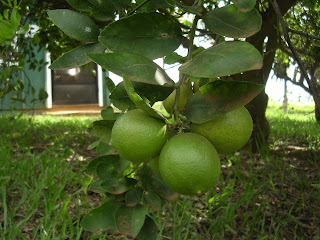Raw Chana Masala and Amaranth Saag
I have an insatiable appetite for the new. When I come across a food I've never tried before, all of my senses come to focused attention like a puppy at a banquet waiting for the crumbs to drop. Nevermind what I came to the shop for, I must immediately purchase and take home this rare treasure. Then comes the fun of taking little nibbles to assess its culinary properties and doing copious research on the internet to come up with an exciting preparation. Some of my experiments may be disasters, but truth be told I'm more excited by the process than the results. And every so often, my creativity may just lead to something inspired (she says modestly).
The philosopher Roland Barthes calls my penchant for novelty "neomania." In his view, a neomaniac was not a particularly flattering thing to be called, as it suggests a lack of contentment with what we already have. I suppose this is a fair enough assessment when we're talking about consumers and the need to buy more more more. But come on, a little joy over a new vegetable at the farmer's market? Far better to exhibit neomania than neophobia.
The neomaniac in me did a little jig when I stumbed across a gorgeous bunch of amaranth at my local market recently. I'm familiar with amaranth grain - it seems to be in every health food shop these days in flour or breakfast cereal form - but I've never seen the leaves for sale here in Australia. However, I've heard that they're used in northern Indian cooking in the same way as spinach or mustard greens. A nice creamy saag popped into my head instantly. I ran home and got some chickpeas soaking to make an chana masala as well, and soon a lovely little Indian spread was in the works.
A lovely green tangle of amaranth leaves
One of the drawbacks of raw cuisine is the need for patience. I had to wait three days for the chickpeas to soak and sprout. Sprout faster, little chickpeas! But my patience paid off big time. Since I've studied Indian cookery in some depth, I had an idea of the flavors I wanted to bring out in these dishes and the ingredients that might combine appropriately.
I think the chana masala was one of my best raw dishes to date, and non-raw partner J raved. The key was mimicking the creaminess of a cream-based sauce with avocado, creating the complexity of flavors in a cooked curry with raw ingridents, and balancing the spices properly. The complexity problem was solved by using sundried tomatoes as well as fresh tomatoes and red onions to up the sweetness factor, and adding fresh ginger for a real kick. I played around with the spices until I had the balance of flavors that I was looking for - using a special blended curry powder made for me by an Indian friend didn't hurt either. There are lots of good commercial curry powder blends out there in a variety of flavors and spiciness, so find one that you really love. The star of the curry was the crunchy sprouted chickpeas, which both J and I actually preferred to mushy cooked chana. They're also such a filling, nutritious ingredient for a raw foodist. So much more lifeforce in these babies than their sad, starchy cooked counterparts.
The saag was lovely as well - creamy, tangy and slightly bitter. Turns out amaranth tastes like a slightly less sweet, slightly less juicy spinach. The key ingredient here is a good mustard - I have a fantastic stoneground variety that is made with apple cider vinegar. If you can't find such a mustard, substitute some ground mustard seed and a bit of ACV. Creamy tahini and olive oil balance with tangy lemon juice, pungent scallion, and a handful of spices to create a really memorable saag. I recommend making these two dishes together, as the colors and flavors combine for a really complete meal.
With these two successes under my belt, I'm looking foward to exploring the flavors of the subcontinent in more depth. For some other inspiring raw Indian recipes, check out the creativity happening at Roshi's Raw Lifestyle.
Chana Masala
1 cup sprouted chickpeas
1/4 very ripe avocado
1/4 cup olive oil
1/4 red onion
1 fresh tomato
1-inch piece of fresh ginger
1/4 cup sundried tomato (soaked if hard)
1 Tbsp curry powder
1 tsp cumin powder
2 tsp coriander powder
salt and pepper, to taste
To sprout chickpeas: Place chickpeas in a glass jar and cover with plenty of filtered water. Soak overnight. In the morning, drain and rinse the chickpeas. Attach a piece of cheesecloth or screen to the top of the jar with a rubber band and turn the jar upside down over a bowl. Or stand the jar over a fine-mesh colander over a bowl. Rinse the chickpeas twice/day until little tails appear. You can let the chickpeas sprout as much as you like. When they're ready they'll taste crunchy and slightly sweet.
To make masala sauce:
Place avocado, olive oil, onion, tomato, ginger, curry powder, cumin, and coriander in a food processor. Whir until smooth. Mix the sauce with the sprouted chickpeas.
Amaranth "Saag"
1 1/2 cups tightly packed amaranth leaves (or spinach)
1 large scallion/spring onion
juice of 1/2 lemon
3 Tbsp olive oil
2 Tbsp tahini
1 Tbsp good quality mustard
1 tsp cumin powder
1/2 tsp coriander powder
1 tsp coarsely ground black pepper
Combine all ingredients in food processor and whir until smooth.






























































